The recipe below is just something I came up with after travelling South East Asia. When looking at the ingredients I use, I guess it has some Singaporean and Indonesian influences. Either way, it tastes good! The following instructions are just rough guidelines – cooking is all about what you like and what you have available, so freestyle away!
Ingredients:
Essential flavours : although I just told you to “freestyle away”, we’re going South East Asian here, so I personally believe that the following ingredients should not be omitted to create that nice South East Asian explosion of flavours:
- Fragrant spices: a nice curry spice mix, and some dry roasted and freshly ground coriander seeds and cumin seeds. Do not skip the dry-roasting-freshly-grounding-and-pounding process – it makes a huge difference!
- Lemon grass – either very finely minced or bashed into a paste, or 1 stalk whole after bashing with a knife. Lemon grass is very fragrant so you don’t need a whole lot – buy a pack and freeze whatever you don’t use in a ziplock bag.
- Garlic & chili: finely minced or bashed. I used some home grown Scotch Bonnets for this recipe, but Asian birds-eye-chili’s or any other type of chili would work just fine. You decide how hot you want this dish to be!
- Fish sauce : can’t leave this umami bomb out! I use a few dashes of it it in so many sauces and marinades, even non-Asian ones. If you don’t have this in your cupboard, you’re missing out.
- Peanut : peanut butter, or, alternatively, whole peanuts roasted and bashed for crunchy texture
- Coconut - either coconut oil to fry the meat in, or some coconut milk stirred into the stew
Once you’ve got these flavours going, you should be half-way in Asia, so not much else can go wrong.
To further build your dish, you will need:
Meat: you want a fatty piece of meat, that stews away nicely. In this case, I used lamb ribs, but fatty pork would work equally well: think neck/shoulder, meaty ribs, or even pork belly – as long as it’s got some fat on it, it should work! If you insist on chicken, go for thighs (with bone) only, as the breast will dry out. Beef-wise, chuck meat for stewing would be an option too. In my opinion though, lamb or pork are still the best choices for this dish. Aim for about 150 – 200g per person.
Veg fillers: anything you like really, or whatever you can find in your fridge. A roughly quartered yellow onion that is fried in with the meat before stewing works very well. A can of tomatoes is a great base for the sauce, and one I would personally not omit. Additional veggies are optional: in this case, I had a potato and some pumpkin lying around, and also some fresh pineapple that I thought would work well. The tropical fruit is a nice touch – I have made the same dish with fatty pork shoulder cubes, baby zucchini, and fresh mango, which worked out great as well. However, if you only want meat in a sauce, you can stick to the bare minimum of 1 onion and a can of tomatoes.

Method:
Prep your ingredients first: finely mince your chili and garlic, and bash our lemongrass to release its fragrance; cut your veggies and meat in bite size pieces (unless if you’re using ribs); dry roast your spices and ground them up with a pestle and mortar (as mentioned above, don’t skip this step – freshly roasted and ground up cumin and coriander = level up!).
roast em
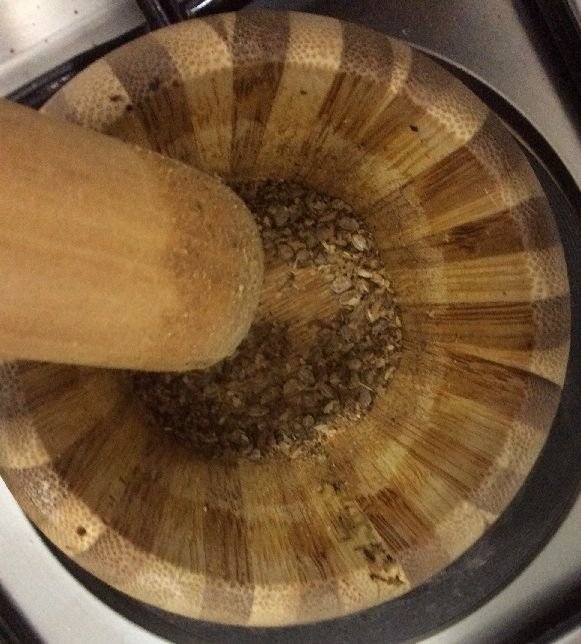
pound em
In a large pan, heat a nice amount of coconut oil (if using) on high heat. Season your meat with a good amount of salt, and fry until nicely browned and starts to look like this:
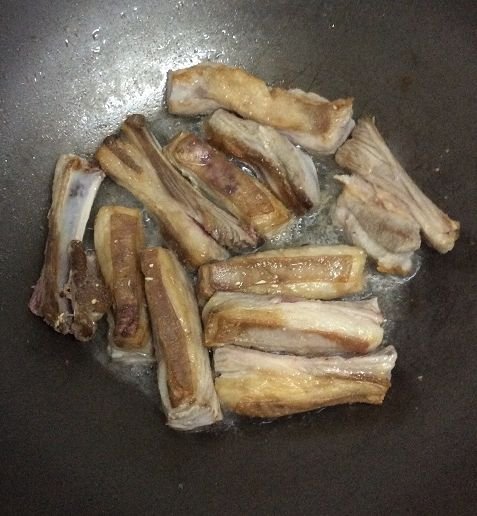
Now add your fragrant ingredients: garlic, chili, lemon grass, and dry spices. Stir around for a minute or two, inhale, close your eyes and let the enticing smells take you on a dreamy trip to a bustling food market somewhere in Asia, snap back out of it, and then add your veggies.
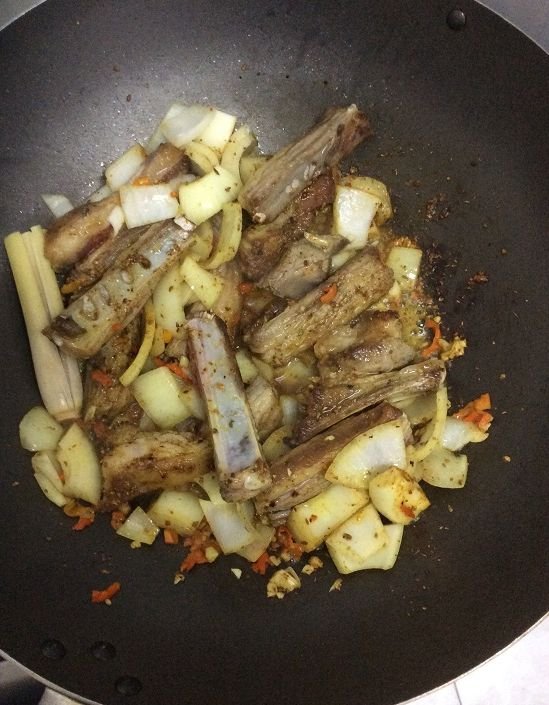
About a minute or two and a few stirs later, add a 3 tablespoons of fish sauce, a can of tomatoes (if using, which I recommend), and some water to almost cover everything about 2/3 up. Now you can also add a tablespoon of palm sugar (or turbinado sugar), and a heaped tablespoon of peanut butter or your crushed peanuts, and stir to combine. Bring this mixture to a simmer and turn down the heat.
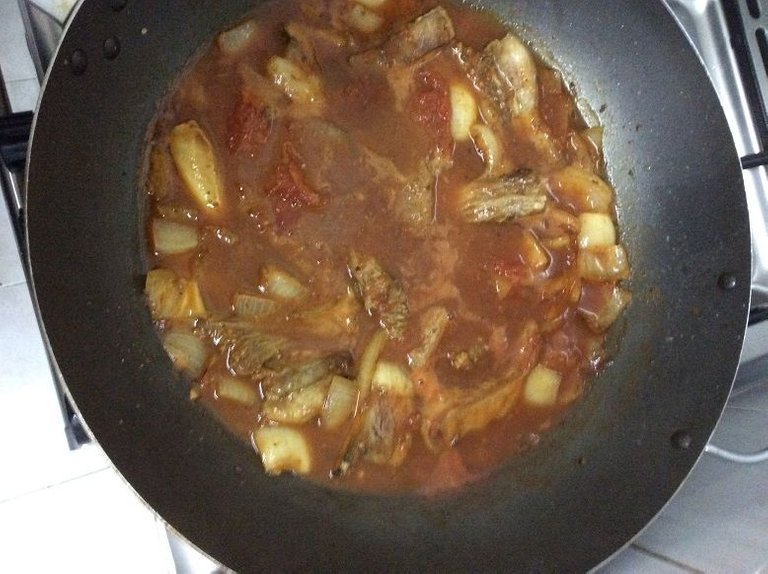
For the next step of the dish, the main ingredient you need is time. Yup, it’s time to let the meat stew low & slow. For this, you have several options: you can leave your casserole on the heat, on a very low flame, with a lid half on. Alternatively, and for better flavor/results, you can transfer everything into a large oven dish, and place in the oven, loosely covered in tinfoil. Whichever method you use, make sure the heat is low and slow (oven temp around 150° Celcius /300° Fahrenheit), and make sure you give it enough time – 2 to 3 hours of bubbling away gently until the meat is so tender that it falls apart and off the bone. During this time, keep an eye on it, moving everything around occasionally so it all cooks evenly. Crack a cold one and chill.
Once your kitchen has filled up with wonderful aromatic smells, and you finally run out of patience, check if the meat is tender enough. If using ribs, make sure the meat is pulled back nicely, and some parts of the meat, veggies, and sauce are nicely caramelized and sticky. It should look like this:
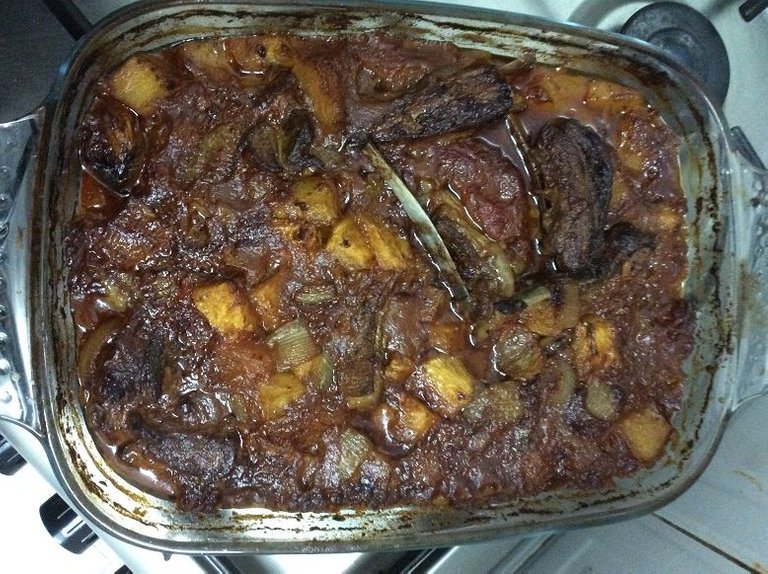
Also, check the consistency of the sauce (if it’s still too watery let it reduce some more, uncovered), and taste your dish and see if it needs more seasoning. If it needs more salt or umami, add some fish sauce. If it’s too spicy, stir in some coconut milk. If you like it a bit sweeter, add some sugar. As a finishing touch, you could sprinkle over some fresh coriander leaves/cilantro, and serve over some rice or with some nice flat bread (naan, roti, pita, …). As long as you have a vehicle to bring that delicious sauce from your plate to your mouth, you’re all set!
But wait! As a final top-tip: this is one of those dishes that actually tastes better when re-heated. If you can, make it a day in advance, or the morning-of, to serve as dinner later that night. Or do as I do: make a massive batch and eat it for several days / freeze the leftovers for a rainy day.
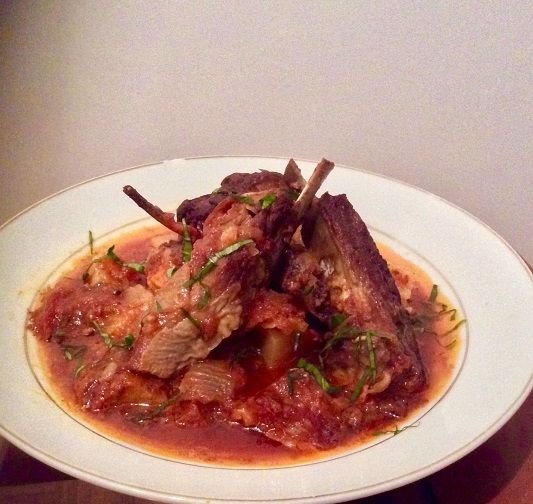
Give this dish a try and let me know what ingredients you added and how you liked it!

Well described
Congratulations @steemphan! You have received a personal award!
Click on the badge to view your Board of Honor.
Do not miss the last announcement from @steemitboard!
Congratulations @steemphan! You received a personal award!
You can view your badges on your Steem Board and compare to others on the Steem Ranking
Vote for @Steemitboard as a witness to get one more award and increased upvotes!